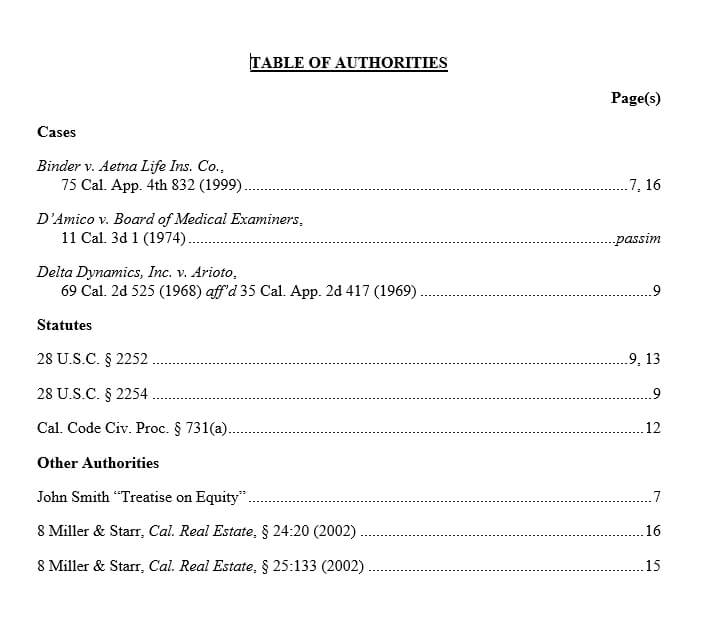

Creating Legal Documents: Everything You Need to Know
The entire idea of preparing legal documents on your own is to cut down on legal costs, which can occasionally be very excessive. However, legal writing is not a walk in the park. Legal documents must be concise and communicate information following specific rules, regulations, and standards.
Legal writing is necessary for lawsuits, divorce papers, contracts, estates, wills, and trusts, among other legal matters. You are not required to prepare legal documents independently; you can draft part of the document and delegate the remainder to an attorney.
Let’s look at what legal documents are, what types of legal documents exist, and how to make a legal document and format it so it’s clean and easy to read and understand.
What Is a Legal Document?
A legal document is a written record of a mutual agreement between parties that has been attested to by their signatures and is admissible in court for all purposes. A legal document must contain the terms and conditions (in the event of an agreement) and adhere to the components of validity, such as consent from both parties, offer and acceptance, legality, consideration, and capacity, to be enforceable.
What Are the Legal Documents Types?
Legal documents are present everywhere, from business partnerships to property leases. Although sometimes oral agreements are appropriate, written contracts are always preferable for their clarity.
The most common legal document types include:
- Nondisclosure Agreements
- Employment Contracts
- Consulting Agreements
- Service Contracts
- Terms of Services
- Sales Contracts
- Privacy Policies
- And many more
Documents like complaints or summons can also be referred to as legal papers during a trial or its preparation.
How to Type a Legal Document?
The elements that follow need to be taken into account when you work on your legal document:
- Outline
The entire writing process must begin with careful planning. The outline determines the format of the document’s contents and the headings under which they will appear. Each legal document has a header that may include a letterhead or the document’s title. The style of the header will entirely depend on the type of legal document you are producing.
Pro tip: To ensure that the whole thing has some kind of structure and order, other text sections should be properly planned out, too.
- Definitions (if necessary)
There is a possibility that you will utilize company acronyms or terms like “business” that specifically refer to a specific business while typing your legal document. The goals of proper legal writing are objectivity, clarity, and conciseness, and you must always strive to achieve them. Therefore, you should add a definitions section that goes into greater detail if you utilize acronyms for terminology the audience is unfamiliar with or specific phrases like “business” to refer to a particular organization.
- Legal writing standards
Legal writing differs from other types of writing in many ways. You must ensure that the content you develop is pertinent to the document you create. Avoid repetition, slang, redundancies, unnecessary words, and passive voice in your writing. You must also write content in the order of importance. The most crucial information (e.g., legal names of all parties, including address and contact information) should come first.
If you add lists, make sure they are organized logically.
Pro tip: Use short paragraphs and phrases to achieve clarity and ensure each section concentrates on a different matter.
- Correct citation
You may be required to cite specific legislation or case laws in certain legal documents to strengthen them. Citing legal writing differs significantly from citing other types of writing, such as academic writing. Here you must ensure that you quote a legal authority per the required formats of the legal document you are working on.
- Signatures
Signatures are a necessary component of legal papers pertaining to wills, trusts, and estates. Each participant or signatory who will be signing the document needs to have space, at the very least, a line. That’s why, in addition to writing or typing their name, you should provide space for what might be a signature line.
Pro tip: Always add a date for relevance purposes.
How to Format a Legal Document?
Nowadays, legal document formatting guidelines differ from jurisdiction to jurisdiction. However, there are some elements that courts prioritize, and they are as follows:
- Paper size
Despite its name, you shouldn’t assume that the “legal size” is the appropriate page size for a legal document. The typical page size in the American legal system is 8.5 by 11 inches.
- Margins
Appropriately setting your margins is vital for meeting court requirements and making your work as readable as possible. As a rule, the bottom margin should be one inch, while the top margin should be two inches. However, in cases where courts require a minimum or maximum margin but make no further provisions, you might have a little flexibility. If it’s your case, try pushing your margins inward or outward and see how it affects the overall readability.
- Font
Many courts will prescribe a minimum font size but not always a font type. Again, you have considerable freedom to choose a font that would maximize readability and help improve the content’s clarity. Standard fonts for legal documents include Times New Roman and Courier.
Pro tip: Numbering your paragraphs and making headings and sub-headings bold will help further enhance the readability of your document.
- Spacing
Another element of formatting where readability should be prioritized is spacing. Most lawyers recommend using a 12-point font as a standard font format for legal documents. But again, if the court rules provide leeway, you can play around with the spacing. For instance, the California Rules of Court dictate that lines may be double or one-and-a-half-spaced.
- Columns
Columns may be needed for some legal papers, such as a list of services or a separate declaration of indisputable facts supporting a request for summary judgment. There are no exact requirements for their formatting. However, we recommend sticking with a two-column format and trying to achieve maximum readability.
- Table of authorities
A table of authorities (TOA), which is an index of all the legal sources listed in a document, is a common requirement for legal documents. There are many ways to group it, with cases, statutes, and other authorities being the most common grouping. Other variations (among many more) include, for instance, dividing statutes into local and state.
Here’s a sample TOA:

Last but not least, when formatting a legal document, remember to avoid using color, break up your content with headers and paragraphs, and maintain consistency.
Pro tip: If you aren’t confident about your formatting skills or need to retype your scanned or handwritten legal document to Word, you can hand it over to a professional typing service to bring it up to standards.
Wrapping Up
Legal document formats might be a source of headaches, especially if you are not a lawyer or a law student, but they won’t go away. So, if you are not into hiring a lawyer to work on your legal documents and forking out significant sums of money, ensure you are familiar with the above fundamentals. And, if you are not doing so already, think about enlisting the services of a legal typing service to save time and make sure your legal documents are consistent, accurate, and formatted the proper way.


